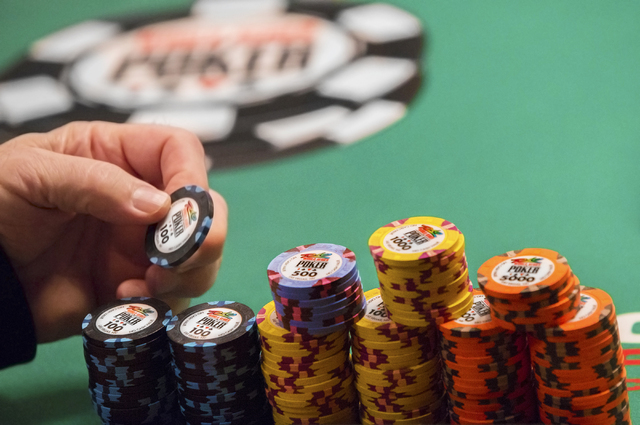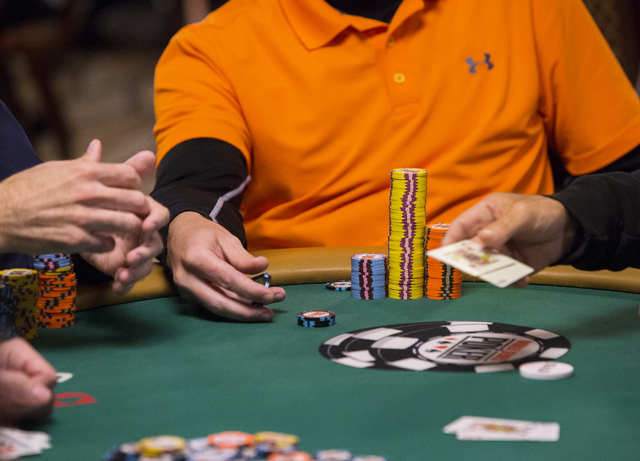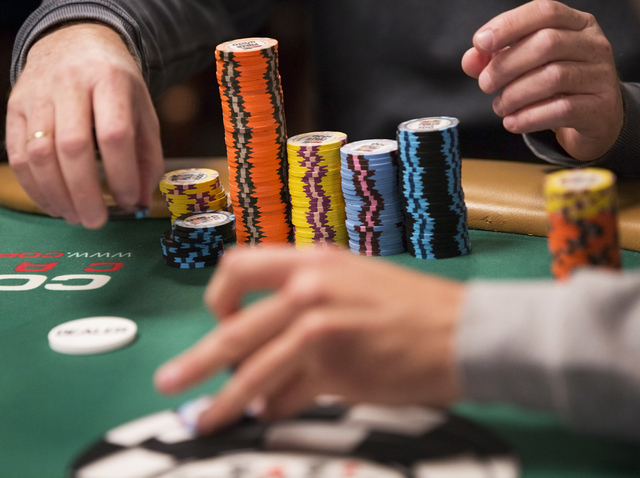WSOP players say there’s an art to stacking chips
Jason Somerville prefers to build castles. Andrey Zaichenko goes for height.
And Antonio Esfandiari is all about having a strong base.
As the leaders started to accumulate more chips on Day 2A/2B at the World Series of Poker’s $10,000 buy-in No-limit Texas Hold ’em World Championship on Tuesday, the stacks around the Rio Convention Center got more creative.
“I think there’s definitely an art to chip stacking,” said Somerville, a professional poker player who won a WSOP bracelet in 2011. “I encourage people to have fun with it. It’s a way of expressing yourself and, you know, maybe there’s some small amount of advantage you can learn by watching others and seeing how they stack their chips.”
The Main Event, which drew 6,737 entrants, continues Wednesday at the Rio with Day 2C. The tournament runs through Tuesday, and the final nine players return Oct. 30 at the Penn & Teller Theater to play for the $8 million first prize.
Valentin Vornicu of San Diego, who has won eight WSOP Circuit rings, was the overwhelming chip leader at the final break at 9:45 p.m.
The general rule of thumb at the table is to arrange chips in stacks of 20 to make it easier for an opponent to count, but each player has his own artistic style after that. One of the most common arrangements is the pyramid or triangle, with a row of five stacks at the back.
“I just try to make it manageable,” said Greg Raymer, the 2004 Main Event champion. “I don’t go for any particular look or anything like that. I’m not going to build the wall. The pyramid is generally more manageable. It’s out of the way more.”
Many of the players in the field didn’t have enough chips yet to construct a fortress, but a variety of formations were on display.
Alvaro Lopez of Tucson, Arizona, the chip leader for much of the afternoon Tuesday, had his chips grouped by color and scattered in front of him in varying stack sizes.
Zaichenko, the leader after Day 1B, organized his in 40-chip columns that resembled a skyline.
“I like big towers,” Zaichenko said. “When I started to play maybe five years ago, every time it was 20. But now I like it higher. I don’t know why it is, but I like it.”
Carlos Mortensen, who won the 2001 Main Event, is famous for creating elaborate chip sculptures at the table. (“You’re like, ‘How much do you have?’ and only he knows,” Somerville said of playing against the Spaniard.)
Three-time bracelet winner Brian Rast often keeps his chips in stacks of five or 10, and Esfandiari has his own method for constructing his stack.
“I usually like to have a foundation, like a building,” Esfandiari said. “So, I do like five chips across the bottom, and that’s my layer. And then I build on top of that.”
Somerville said having an extravagant chip stack can intimidate less experienced players in some instances. There also is the long-held theory that a chip stack offers a clue to that player’s style.
“I think if someone has stacks that are kind of tightly put together and stacked on top of each other, that player is probably not going to be firing those in. They’ve built them into something,” Somerville said. “But someone who has their stacks more sprawled out, in either a pile or more messy, is more likely to be spewy and aggressive. So, you actually can learn something about your opponent based on their chip stacks.”
Contact reporter David Schoen at dschoen@reviewjournal.com or 702-387-5203. Follow him on Twitter: @DavidSchoenLVRJ





































